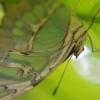- Formiculture.com
- Forums
- Gallery
- Members
- Member Map
- Chat

May 25 Queen found in Miami Fl
Started By
Antdoggy
, May 25 2017 12:54 PM
6 replies to this topic
#1
 Offline
-
Posted May 25 2017 - 12:54 PM
Offline
-
Posted May 25 2017 - 12:54 PM
1. Location of collection: on a open flat field
2. Date of collection: may 25
3. Habitat of collection: grass
4. Length (from head to gaster):
5. Color, hue, pattern and texture: yellow on belly
6. Distinguishing characteristics: yellow stripes on belly
7. Distinguishing behavior: had a ant attached to it
8. Nest description: didn't see
The tiny ant attached to her was trying to get out the tube so I let it out and she took off her wings
http://imgur.com/a/flUPv
2. Date of collection: may 25
3. Habitat of collection: grass
4. Length (from head to gaster):
5. Color, hue, pattern and texture: yellow on belly
6. Distinguishing characteristics: yellow stripes on belly
7. Distinguishing behavior: had a ant attached to it
8. Nest description: didn't see
The tiny ant attached to her was trying to get out the tube so I let it out and she took off her wings
http://imgur.com/a/flUPv
#2
 Offline
-
Posted May 25 2017 - 12:57 PM
Offline
-
Posted May 25 2017 - 12:57 PM
I think this looks like some kind of Brachymyrmex.
#3
 Offline
-
Posted May 25 2017 - 1:01 PM
Offline
-
Posted May 25 2017 - 1:01 PM
I think this looks like some kind of Brachymyrmex.
the ant that was attached looked exactly like this pic http://myrmecos.file...bscurior3s.jpg
but the ants are a bit darker, if the male attached didn't die after mating did I let it out too early? it was flying around the tube trying to get out and the queen took off the wings
#4
 Offline
-
Posted May 25 2017 - 1:17 PM
Offline
-
Posted May 25 2017 - 1:17 PM
If the queen took off her wings, she's very likely to be fertile, especially right after mating.
#5
 Offline
-
Posted May 25 2017 - 1:30 PM
Offline
-
Posted May 25 2017 - 1:30 PM
Brachymyrmex depilis?
- Ants Galore likes this
All my colonies are dead.
Except:
Pogonomyrmex barbatus
Pheidole obscurithorax
Pheidole morens
#6
 Offline
-
Posted May 25 2017 - 1:34 PM
Offline
-
Posted May 25 2017 - 1:34 PM
Brachymyrmex depilis?
I agree, depilis is apparently common in the area that this queen was found in, so that's what I'm gonna go with now.
#7
 Offline
-
Posted May 25 2017 - 2:01 PM
Offline
-
Posted May 25 2017 - 2:01 PM
This is most likely Brachymyrmex obscurior evidenced by its size, darker brown color, and more importantly dark brown males. In South Florida it's easily the most dominant Brachymyrmex species, with B. patagonicus being the more common farther north. B. depilis is present throughout the state but is much less conspicuous, and never in the numbers of the introduced species.
Edited by 123LordOfAnts123, May 25 2017 - 2:03 PM.
1 user(s) are reading this topic
0 members, 1 guests, 0 anonymous users














